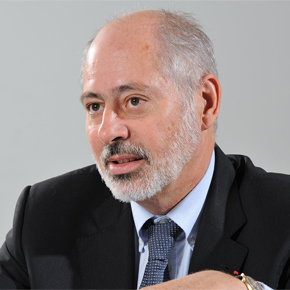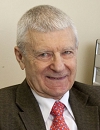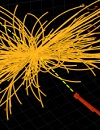 |
||
|
San Onofre Infantile Disorder Vladimir Rychin, AtomInfo.Ru , PUBLISHED October 25, 2012 Replacement of steam generators in San Onofre NPP - the story lasting for years and costing billions of dollars. It reveals the fundamental problems that have accumulated in the U.S. nuclear industry. Alloy 600 The San Onofre NPP consists of two operating units - the second and third ones. It have the PWR light water reactors PWR up to 1100 MW(e). The first unit of the plant with the reactor PWR 456 MW (e) was finally stopped in 1992, and today serves as a repository of spent nuclear fuel. The second unit was commissioned in September 1982. The third was commissioned exactly in a year - in September 1983. Station on the Pacific coast of California is the one who faced to the problem of alloy 600. The NRC's NUREG-1823 report said that the third block of San Onofre NPP was first where the case of serious corrosion damage of element of alloy 600 was identified - namely, fitting for instrumentation equipment on the pressurizer. Like many other U.S. plants, nuclear power plants, San Onofre NPP was forced to go for early replacement of steam generators - also due to corrosion. The SG could not withstand the design lifetime of 40 years.
In 1959, a report on a scientific seminar on corrosion sounded a warning about the increased susceptibility to corrosion high-nickel alloys. They were ignored. As a result, in the 90s in the western plant began a lengthy and costly company to replace equipment damaged by corrosion cracking of the primary circuit (PWSCC). On the San Onofre NPP SGs, the alloy 600 was used for the heat exchange tubes. The author of articles has no accurate data on the speed of tube degradation on these units. But we know from EPRI reports, that the rate of degradation of alloy 600 steam western projects is an average 0.3% per year. Japanese production In the XXI century, the United States has lost the ability to produce their own steam generators for nuclear power plants. It is not that Americans are silenced. But for the general public this fact served in a nice wrapper "World Wide Components Fabrication". Thus, for the first in the country AP-1000 units of Vogtle NPP the steam generators will be manufactured in South Korea, and forging for it - in Japan. American labor unions have been trying to reverse a nasty trend and return the nuclear engineering to the country. In 2010, the trade union of the steel industry workers (USW) addressed an open letter to regulators, urging them to ban the use of imported equipment for the new U.S. units. I am concerned about the potential use of imported equipment for the reactors, as it not only limit the ability of our nation to address the unacceptably high level of unemployment, but potentially threaten the health and safety of people ...... We are repeatedly confronted with examples of unsafe and substandard products coming from China to consumers - dog food, heparin, tires and other products ... The risks are real, said USW President. But the struggle of trade unions may not lead to anything, and the revival of the American nuclear imdustry is not moved an inch. Not surprisingly, the owners of San Onofre NPP had to apply for the new steam generators abroad, namely in the Japanese corporation Mitshubishi Heavy Industries (MHI). From the Japanese plant workers it was requested to produce and deliver new steam generators capable to work reliably at least 20 years or more. Terms of the license for San Onofre NPP units completed in 2012-2013 to achieve 40 years of service. But the owners of the station planned to extend to 20 years, and then, perhaps, another 20. MHI was actively took up the order. But at first there were warning signs. During the inspection two SGs for third unit in spring 2010, it was revealed the cracks in the welds. The cracks in operating conditions will inevitably become a hotbed of corrosion damage. Results of the inspection were the subject of heated discussions with customers and regulators. The Americans blamed their Japanese counterparts. But the causes of cracks were unknown. The NRC and operator have different ideas for it. Regulators saw the root of evil in the method of preparation of materials for welding, adopted by the Japanese factories. In turn, the operator thought to the change in the technical process used by the factory workers during manufacturing of SG for the third unit. The factory has been overloaded with orders and refused to hand grinding for welding, explaining it by the fact that the physically unable to allocate the necessary tools. After all, the fault has been eliminated. But the bad taste left by the incident. The expert who is familiar with western technology, told to AtomInfo.Ru: "The place where a defect, always was problem for PWR SGs. This is the welding seams of the plate (in the English terminology - divider plate or partition plate), dividing the input and output steam generator chamber. " Problems with the quality of partition plate welding repeatedly observed in the steam generators of western projects - but, in general, in the past. It was believed that in our time this disaster has been eliminated. The occurrence of nuclear engineering infantile disorder during manufacturing of steam generators for San Onofre NPP was obliged to alert all parties involved. But, apparently, it did not. SG replacement In 2009, the San Onofre NPP began the work to replace the steam generators. This was preceded by an uneasy operation to deliver them from Japan. From the Japanese factory in Kobe the steam generator was delivered to the port of Long Beach, where barges were used to transport it to the base of the U.S. Marine Corps' Camp Pendleton, 15 miles away from nuclear plant. Last miles between the marine camp and plant were crossed with walking pace. Indeed, how can one carry the SG with a weight of 640 tons and a height of about 20 meters? The correct answer is - very slowly. The crawler was crawled on roads with a speed not more than 5 miles/hour. The difficulties of transportation do not go to any comparison with the difficulties faced by the staff during the actual replacement. It's hard work and additional doses to people. Mandatory element of each operation to replace an containment opening. Every time a new approach - in the U.S. there is no case where containment would have to be opened in routing manner, in the same way as in the other unit. Specifically, the San Onofre NPP concrete containment dissected by the high-pressure water jet with 25,000 feet per square inch. The steel containment was opened by the cutting torch. The entire operation to replace the steam generators in San Onofre NPP was ended in the fall 2010 outage in the third unit. The operator was spent a total of over 670 million USD. It's profitable because the closure of the plant and the transition to a non-nuclear power generation would require ГЫВ 1 billion for the next 12 years. But the operator and consumers would be able to get the benefits just in one case - if the new steam generators would have worked fine. Tube defects In January 2012 the new San Onofre NPP SGs were revealed to be damaged. The regulators require the plugging of all the defected tubes and suspected defects. In addition, some of the tubes have been involved in the test program and U.S. regulations demand these tubes to be plugged. As a result, the 510 tubes were plugged at the second unit and the 807 tubes were plugged at the third unit. In total, each steam generator has 9727 tubes. What were the reasons of such fast tube degradation on the new steam generators? One suggestion is outrageous - due to the tube-to-tube fretting. In other words, the heat exchange tubes of steam generators under the influence of the flow passing through them bent or removed from their positions, touching the adjacent tubes. The tubes were rubbing against each other and, of course, rubbed at the contact points. Such a phenomenon should be precluded by the construction of steam generators. However, at the San Onofre NPP it could be a reason of fast tube degradation. A thorough inspection of all U.S. plants found that the California case is not alone. The EPRI report, presented in February 2012, contains a short extract from the degradation of steam generators database - the tube-to-tube fretting was detected in two more U.S. units. The report omits the name of these units. But we know from other sources - it was the TMI-1 Arkansas One-1 units. Interestingly, there was fretting on the tubes from 690TT alloy - that is, on the new steam generators made to replace the old ones. Both units of San Onofre NPP were shutdown for the investigations. Almost immediately it became clear - the owners of the plant "optimized" the technical and legal process to save time and money during SG replacement. The most serious complaint was to the way of replacement justification. They used so-called like-to-like option. In this case, the new equipment should be identical to the replaced one, and the volume of justification and regulatory approval works is sharply reduced. In fact, the like-to-like principle was not met on the San Onofre NPP. The original SG has 9350 tubes, and the new one - 9727. The project developers have identified this change as "minor" and say that it is not violated the similarity principle. This change was not the only one. The original Model 3410 steam generators at Unit 2 and Unit 3 have the nominal wall thickness of 0.048 inches, 9,350 mill-annealed, Alloy 600 tubes, the combination of u-bend tubes and tubes with two 90 degree bends (also called square bends). The lateral support was provided by a number of lattice-grid (i.e., eggcrate) carbon steel tube supports. Tube support in the upper bundle was provided by carbon steel diagonal bars (commonly called batwings) and vertical straps. It contained a cylindrically shaped support structure beneath the center of the tubesheet(called the stay cylinder) that provided structural support to the large diameter tubesheet. The Unit 2 and Unit 3 replacement steam generators have the nominal wall thickness of 0.043 inches (10.4% thinner than Original SG design), 9727 tubes within each steam generator, which are arranged in 142 rows and 177 columns, thermally treated Alloy 690 tubing, the u-bend configuration. The new anti-vibration bar assembly is a free floating design that is supported by the tube bundle and is not attached to the tube bundle wrapper. By the way, professional SG developers were not attracted to steam modification project. The operator and the factory workers have decided that to cope with the problem on their own. Playing with the rules of the design is worthy of condemnation, but is unlikely to give an answer to the question - why such cases of tube-to-tube fretting were found on two other American units? Put forward a claim to the manufacturer, at first glance, does not work. Not least because, in all three cases, there are different manufacturers - the companies of Japan (MHI), France and Canada. There is an interesting hypothesis that the reason connects to the hour-glassing effect , or the effect of the hourglass. With this effect, the Americans and their Western counterparts faced in the romantic period of the development of nuclear energy - in the 1960-70th. The hourglass effect was typical for the western SGs and was the result of facilitation of manufacturing processes of heat exchange tubes. It is in the area of responsibility of factory workers. The operators defined soon the relationship between the effect and the appearance of the contact between tubes. If the hypothesis of the role of the hourglass effect in the events at San Onofre NPP fretting will be taken as a basis, it threatens to become a hardball scandal. Hourglass effect - a typical manifestation of the infantile disorder of the nuclear power, which was seemed to be wholly eliminated by now. Its revival can be an evidence of the loss of production culture and the experience of nuclear equipment manufacturing accumulated in the last century. Preliminary results The story of the replacement of the steam generators in San Onofre NPP has not yet been completed. The situation looks now like this. The second and third units are shutdown since January 2012. The operator is seeking permission to let the second unit to run for six months, followed by a stop for a thorough examination of the equipment. The regulators consider documents prepared by the operator, and it will take several months. No news on the Unit 3 restart. In September, it began the fuel unloading. Some 700 NPP workers could be fired. Experts believe that the unit can be saved only by new SG replacement. The investigations of the causes of failure continue. The regulator has a list of almost 100 questions not yet answered. Even the resignation of NRC Gregory Jacko, who held the position of especially tough in the investigation, has not helped the plant - the new head of the NRC confirmed that the units do not return to work for an "prolonged period." The theme of revealed infantile disorders of U.S. nuclear power is not widely discussed in the United States. Other news: Unit 4 of Kalinin NPP released for commercial operation Sergey Kirienko greeted the ceremony participants on the power unit commissioning for the commercial operation. Russian Mars Water Sniffer Goes Online Curiosity successfully touched down on the Red Planet last Monday. Bushehr Nuclear Plant to Run at Full Capacity in August Bushehr is planned to reach 100 percent capacity this August. |
Hero of the day 
Jacques Repussard: knowledge, independence, proximity They told me: "Mr Repussard, we're not used to responding to anti-nuclear organisations". To which I replied: "We will not reveal any state or trade secrets, but we will not leave them without any answer". INTERVIEW
Georgy Toshinsky OPINION
Natalia Antonova Last news:
|
Licence Р В Р’ВВВВВВВВВВВР В Р’В» №ФС77-30792. ATOMINFO™ trademark.

